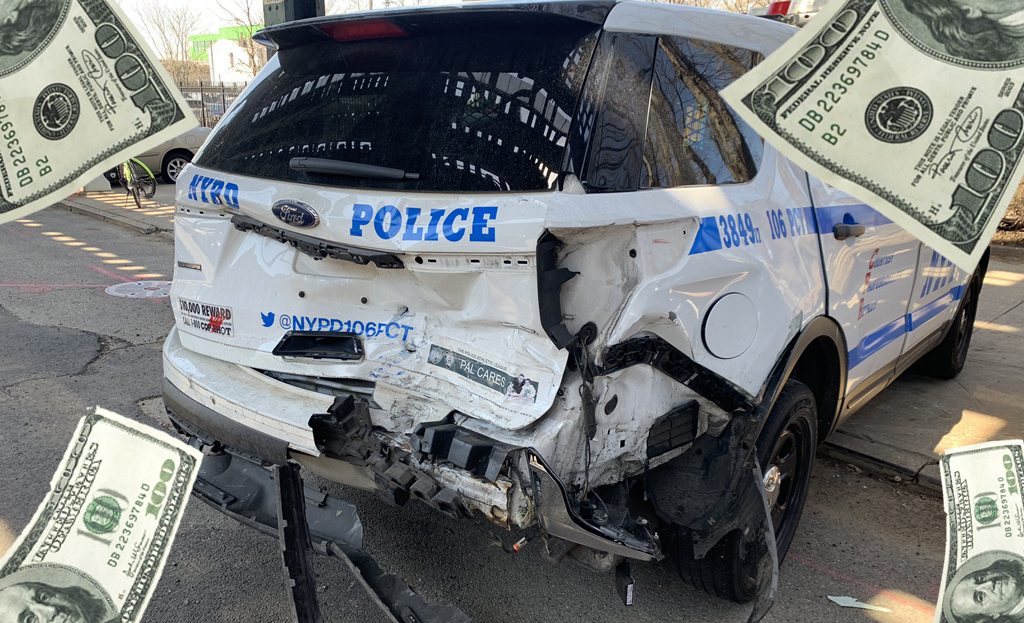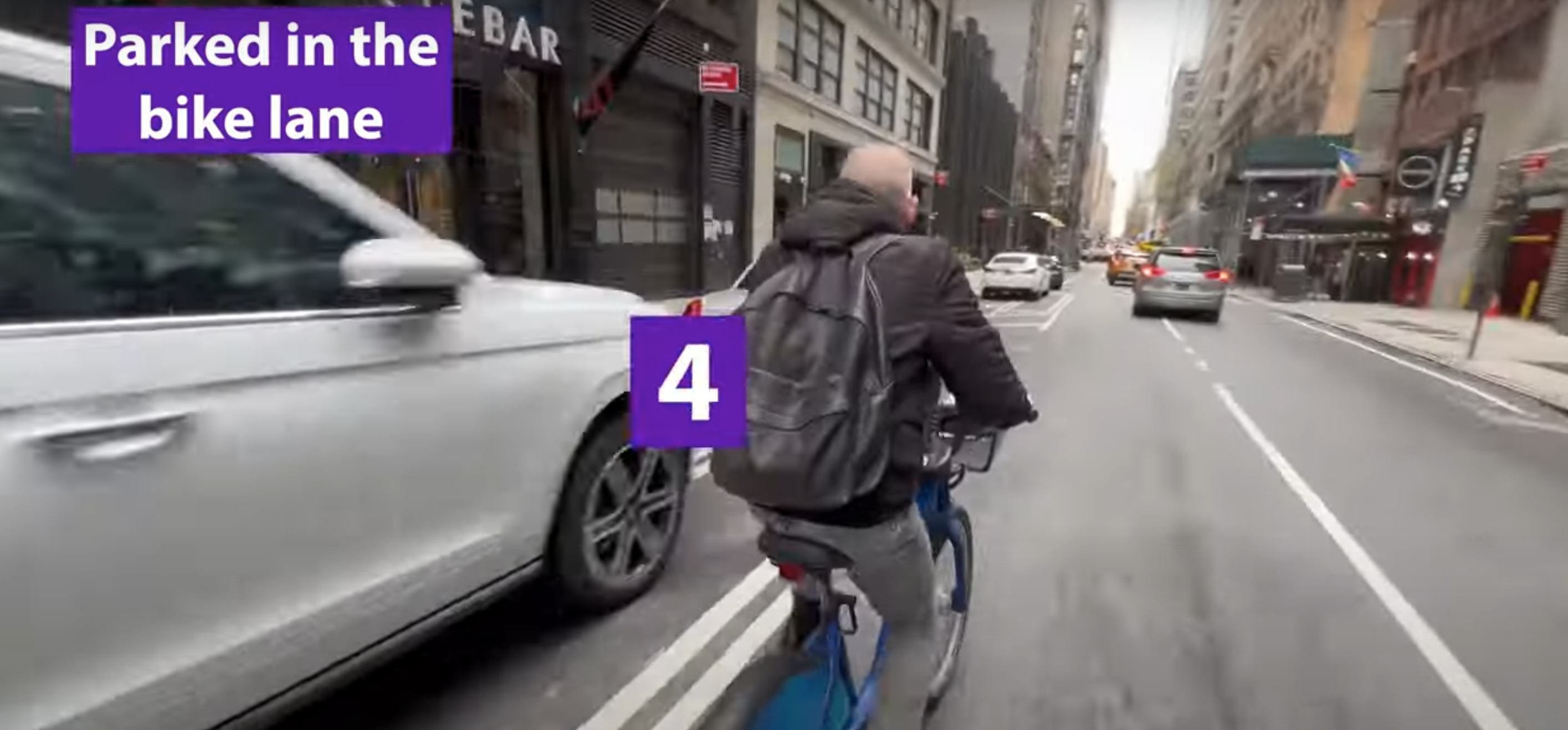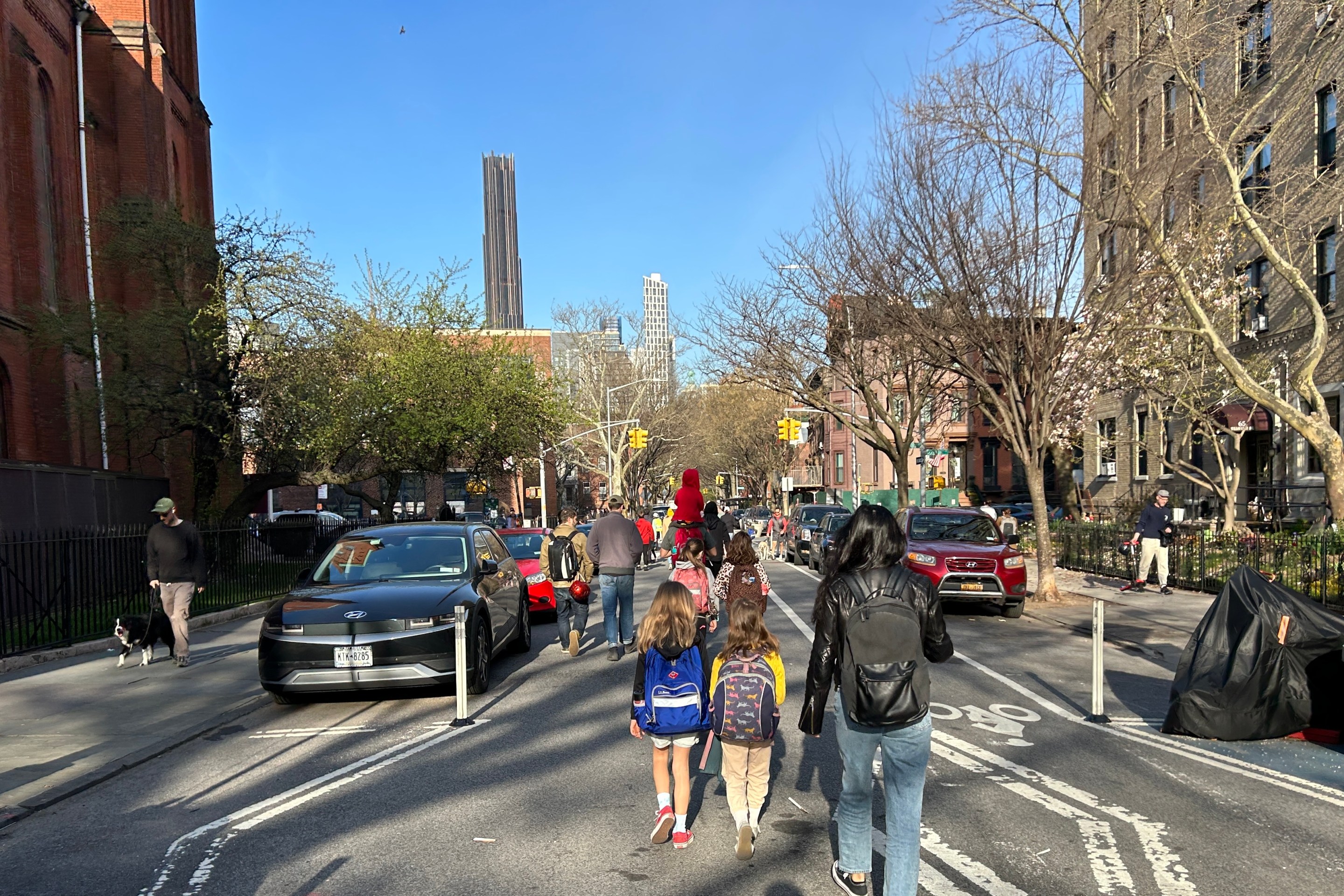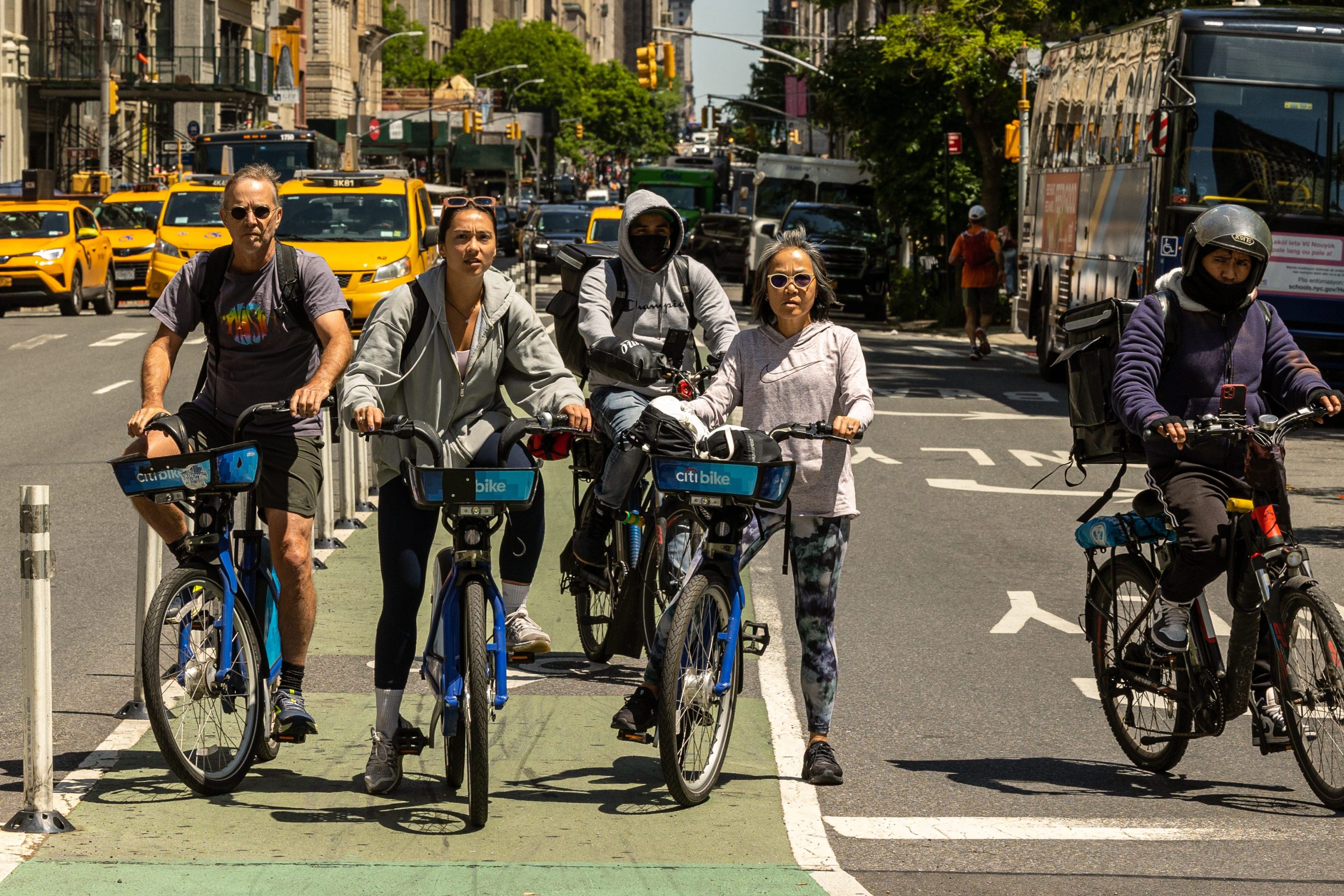If you just landed in the city or you've been off the grid for the past eight months, you might be wondering what the heck is going on on Prospect Park West. To catch yourself up, dive into this exquisite piece from the Guardian's Matt Seaton.
Seaton's blow-by-blow masterfully sets the scene: the controversial, effective transportation chief, her wealthy, well-connected detractors and their high-profile corporate lawyers, all engaged in a battle over a few hundred feet of asphalt in a drama playing out on the front page of the "world's finest newspaper."
But unlike local media, Seaton puts all the pieces in one place:
Two days before the lawsuit was launched, the Sunday edition of the New York Times's Metro section led with a feature about how much Sadik-Khan had upset people with her highhanded approach to policy-making. Putting aside the implicit sexism of the piece, there was no attempt to report the facts -- the booming commerce in the newly pedestrianised Times and Herald Squares, the improvements in road safety, particularly pedestrian casualty numbers, from the traffic-calming effect of installing bike lanes, and the increase in cycle use itself.
"What is more," Seaton writes, "the article made occasional use of an interview with Sadik-Khan evidently recorded some weeks earlier; so clearly, this feature had sat on the stocks until an editor decided the moment was ripe. And that moment just happened to be the Sunday before the Monday when the lawsuit was filed."
Media conspiracy theories aside, Seaton, like Rob Hoell before him, illustrates how outsiders have a better grip on the politics at play than our own media. And he certainly shows a keener understanding of what's at stake.
New York City justly sees itself as the world's greatest city: here, in some sense, people live the way everyone would live if they had the chance. How New York -- the city that still has a uniquely low level of car ownership and use -- manages its transport planning in the 21st century matters for the whole world: it is the template. If cycling is pushed back into the margins of that future, rather than promoted, along with efficient mass public transit and safe, pleasant pedestrianism, as a key part of that future, the consequences will be grave and grim.




